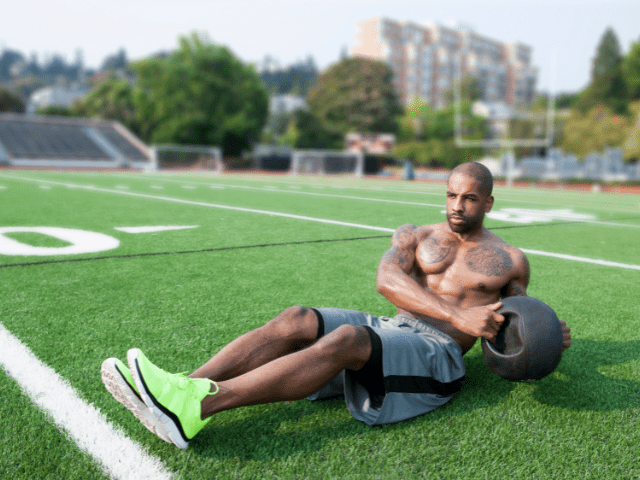V-Ups (How To, Benefits, Muscles Worked)
V-Ups are a powerful and effective core exercise that targets several muscle groups at once. Even if you’re an experienced lifter, V-Ups can be a challenging addition to your core workouts.
This guide will walk you through the step-by-step process of performing V-Ups correctly, the common mistakes to avoid, variations to spice up your program, and the numerous benefits it can bring to your overall physical fitness.
How To Do V-Ups
Equipment Needed
- None
Step-by-Step Instructions
- Begin by lying flat on your back on a comfortable, yet firm surface such as a yoga mat. Your legs should be extended, feet together and arms stretched out above your head. Your body should form a straight line from your hands to your feet.
- Before you initiate any movement, ensure that your core is engaged. This means contracting your abdominal muscles as though you’re about to be punched in the stomach. This step is crucial to protect your lower back and maximize the effectiveness of the exercise.
- In a controlled motion, simultaneously lift your upper body and lower body off the floor while keeping your arms and legs straight. Imagine that you’re trying to touch your feet with your hands. Your body should form a ‘V’ shape at the top of the movement.
- At the top of the movement, only your buttocks should be in contact with the floor. Try to hold this position for a quick moment, maintaining your balance.
- After holding the peak position, slowly lower your upper and lower body back to the floor. It’s important to maintain control during this movement – don’t just fall back onto the mat.
- Once your body is back in the starting position, you’ve completed one rep of a V-Up. Now, repeat for the designated amount of reps.
Coaching Points / Common Mistakes
It’s easy to rush through the movement, especially when it becomes challenging. However, maintaining control throughout the entire range of motion is crucial for the effectiveness of the exercise and for avoiding injury.
It’s far more beneficial to do fewer V-Ups with proper form than to do more with poor form. If you find that your form is starting to break down, it’s better to rest and recover than to risk injury.
Strive to keep your arms and legs as straight as possible throughout the movement. If flexibility is an issue, it’s okay to have a slight bend, but keep working towards improving flexibility.
Benefits of V-Ups
V-Ups are a highly effective exercise with a number of physical benefits. Here are a few of the most important:
Core Strength: V-Ups work your entire core, including your abdominal muscles, obliques, and lower back. This can help improve overall body stability and balance.
Flexibility: V-Ups require and promote flexibility in your hamstrings and lower back, which can benefit your performance in other exercises and physical activities.
Athletic Performance: The improved core strength and flexibility provided by V-Ups can enhance performance in various sports and physical activities, from running and swimming to team sports and weightlifting.
Alternatives to V-Ups
Need an alternative movement to V-Ups? Here are a couple of exercises that you may be able to use as a substitution.
(Need more options? Here are my favorite V-Up alternatives.)
Bicycle Crunches
For Bicycle Crunches, you lie flat on your back, hands behind your head, and alternate touching each elbow to the opposite knee, like a cycling motion.
Bicycle Crunches engage the obliques in addition to the abs, making them a great exercise for overall core strength and stability.
They also don’t require the same level of lower back flexibility and hamstring flexibility as V-Ups, making them a good choice for people with tight hamstrings or lower back issues.
Med Ball Russian Twists

While seated on the ground, lean back slightly and lift your legs off the floor. Hold a weight with both hands and twist your torso to each side, trying to touch the weight to the ground.
Russian Twists (or simply Seated Med Ball Twists) are excellent for working the obliques and the rest of the core, contributing to improved balance and stability. The twisting motion can also provide a new challenge for your muscles if you’re used to more linear movements like the V-Up.

Online Strength Programs
- 1-on-1 Online Coaching
- Sports Performance Programs for Football, Basketball, Soccer & More
- Programs for Former Athletes (Legends) Who Still Want to Train Like Athletes
- Programs for Adults Who Want to Get Healthy (and look great at the beach!)
- Use Code “HB10” to Get 10% Off Today
More Links and Info
If you’d like to see more core exercises, head over to the Core Section of our Exercise Library. There you’ll find dozens of core movements, all with step-by-step instructions.

